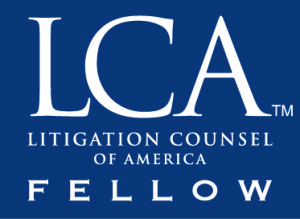How Can I File a Third-Party Claim After a Construction Accident?
If you got hurt on a New Jersey construction job, your first thought (after the pain, probably) is likely about workers’ compensation. And that’s fair. But here’s something else to chew on: workers’ comp might not be the only game in town.
What if someone besides your boss or a coworker dropped the ball and caused your accident? You might have what’s called a third-party claim. This is a different path, a separate personal injury lawsuit that can exist alongside your workers’ comp case. It could mean access to compensation for things workers’ comp doesn’t touch.
If you think someone else’s mistake led to your injury on a job site, give the team at Maggiano, DiGirolamo & Lizzi a call at (201) 585-9111.
Table of contents
- Workers’ Comp: The Baseline Coverage (But It Has Its Limits)
- Identifying the “Third Party”: Who Else Was Involved?
- Negligence on the Job Site: When Does Carelessness Become Liability?
- Making It Happen: The Process of Filing a Third-Party Claim
- Workers’ Comp and Third-Party Claims: Can You Do Both?
- Secure Your Rights After a Construction Accident
Workers’ Comp: The Baseline Coverage (But It Has Its Limits)
So, you got hurt at work. In New Jersey, the law generally says your employer, via their workers’ compensation insurance, needs to cover your approved medical treatment and pay a portion of your lost wages while you recover. The New Jersey Workers’ Compensation Act (codified at N.J.S.A. 34:15-1 et seq.) establishes this as a “no-fault” system. What does “no-fault” mean? It means you don’t have to prove your employer did something negligent to get these benefits. Even if the accident was partially your fault, workers’ comp should still cover you (within certain limits, of course – being intentionally reckless or intoxicated is a different story).
This system was designed to provide relatively quick, essential support to injured workers without needing lengthy court battles against the employer. In exchange for providing this no-fault coverage, the law, specifically N.J.S.A. 34:15-8, generally shields your employer from being sued directly by you for the injury. This protection is often called the “exclusive remedy” rule.
Here’s the rub: Workers’ compensation benefits are helpful, but they aren’t designed to make you completely whole.
- Medical Bills: Covered, yes, but usually only for doctors approved by the workers’ comp insurance carrier.
- Lost Wages: You only get a percentage (typically up to 70%) of your average weekly wage, subject to state maximums. This might not cover all your bills.
- Permanent Injury: You might get an award for permanent disability, but it’s based on a set schedule and might not reflect the full impact on your life and future earning potential.
- Pain and Suffering: Workers’ comp does not pay for your physical pain, emotional distress, or the loss of enjoyment of life caused by the injury.
These limitations mean that while workers’ comp is a necessary first step, it might leave significant gaps, especially if your injury is severe and has long-term consequences. This is precisely why exploring whether someone else bears responsibility becomes so important. If a third party’s negligence caused your injury, you might be able to recover compensation for those losses that workers’ comp doesn’t cover.
Identifying the “Third Party”: Who Else Was Involved?
On a bustling construction site, there are usually multiple companies and individuals working alongside each other. A third party is essentially any person or company, other than your direct employer or a co-worker employed by the same company, whose negligence contributed to your injury.
Let’s paint a picture of who these third parties might be:
- General Contractor (GC): The company overseeing the entire project has a significant duty to maintain overall site safety. If they failed to coordinate trades properly, enforce safety rules, or address known hazards, they could be liable.
- Subcontractors: Was the faulty scaffolding erected by a different company? Did an electrician from another firm leave live wires exposed? Did a clumsy operator from another crew cause your injury? Subcontractors (who aren’t your employer) owe a duty of care to others on the site.
- Property Owner: Depending on their level of control and knowledge, the owner of the land where construction is happening might be responsible if they knew about a dangerous condition on the property and failed to address it or warn about it.
- Architects and Engineers: If a design flaw in the building plans or a negligent structural calculation leads to a collapse or other failure causing injury, the responsible design professional could be a third party.
- Equipment Manufacturers or Suppliers: Did a power tool malfunction due to a manufacturing defect? Was a piece of heavy machinery unreasonably dangerous because of its design? The company that designed, made, or supplied the faulty equipment could be liable under product liability principles.
- Drivers: Were you hit by a delivery truck or a vehicle operated by someone from another company while working on or near the site? The negligent driver and potentially their employer could be third parties.
Negligence on the Job Site: When Does Carelessness Become Liability?
Just because someone else was involved doesn’t automatically mean they’re legally responsible for your construction accident injury. To hold a third party liable, you generally need to show they were negligent.
In legal terms, proving negligence typically involves establishing four elements:
- Duty: The third party owed you a duty of care. On a construction site, this duty usually means acting reasonably to avoid causing foreseeable harm to others present. For example, a GC has a duty to maintain a reasonably safe worksite, an equipment manufacturer has a duty to produce reasonably safe products, and a subcontractor has a duty to perform their specific work safely without endangering others.
- Breach: The third party breached that duty. This is the “mess up” part – they failed to act as a reasonably careful person or company would have under similar circumstances. Examples include:
- A subcontractor improperly assembling scaffolding.
- A GC ignoring safety complaints or failing to enforce safety protocols like fall protection.
- An equipment supplier providing a machine they knew (or should have known) was defective or lacked proper safety guards.
- An engineer approving faulty plans.
- A property owner failing to fix a known hazard like a poorly lit stairwell used by workers.
- Causation: The third party’s breach directly caused your injuries. You need to connect their specific failure to your specific harm. Would the injury have happened but for their negligent action or inaction? Was your injury a foreseeable consequence of their breach?
- Damages: You suffered actual harm or losses as a result of the injury (e.g., medical bills, lost income, physical pain, emotional suffering, permanent impairment).
How can you tell if someone breached their duty? Sometimes it’s obvious, like witnessing another worker operate machinery recklessly. Other times, it requires investigation. Violations of Occupational Safety and Health Administration (OSHA) regulations can be strong evidence of a breach of the duty of care. While an OSHA violation doesn’t automatically equal negligence in a civil lawsuit, it demonstrates that the party failed to meet established safety standards designed to prevent the very type of accident that occurred.
Verdicts and Settlements
$1,725,000 - Slip and Fall Injury
For a 47-year-old woman who slipped on a quarter-size droplet of chicken grease in the aisle of a supermarket. Our client suffered injury to her knee and ankle. Ultimately, over the course of 4 years, she required surgery to her ankle, lower back, and neck. The grocery store contested both liability for and causation of our client’s injuries. Our attorneys argued that the store should have known…
$1,170,000 - Motor Vehicle Crash
For an elderly couple suffering multiple injuries in an auto accident and aggravated by injuries suffered a few months later in a subsequent auto accident.
$6,200,000 - Truck Accident
A commercial truck driver disabled after a crash which resulted in a traumatic brain injury.
Making It Happen: The Process of Filing a Third-Party Claim
You’ve already notified your supervisor about the injury, creating an official record for both workers’ comp and any potential third-party action. But what next? Simply reporting the incident isn’t enough for a third-party claim. A detailed investigation is needed to figure out precisely what happened and who might be at fault besides your employer. This will involve your lawyer:
- Reviewing your employer’s accident report and any OSHA investigation reports.
- Obtaining contracts between the GC, subcontractors, and property owner to understand duties and responsibilities.
- Interviewing witnesses again, sometimes formally through depositions later.
- Consulting with construction safety consultants, engineers, or medical professionals to analyze the cause of the accident and the severity of your injuries.
Figuring Out Who to Target
Based on the investigation, you and your legal counsel will identify the specific individuals or companies whose negligence appears to have caused or contributed to your injury. These become the defendants in your third-party lawsuit.
What’s It Worth? Calculating Your Damages
Unlike the defined benefits of workers’ comp, a third-party lawsuit allows you to seek compensation for the full range of your losses. This includes:
- All Past and Future Medical Expenses: Not just what workers’ comp covered, but potentially copays, treatments they denied, and anticipated future care needs.
- Full Past and Future Lost Wages/Earning Capacity: The difference between what you could have earned and what you can now earn because of the injury, not limited by the workers’ comp percentage cap.
- Pain and Suffering: Compensation for the physical pain, emotional distress, inconvenience, and loss of enjoyment of life resulting from the injury. This is often a significant component and is not available through workers’ comp.
- Property Damage: If any personal property was destroyed in the accident.
- Other Economic Losses: Out-of-pocket expenses related to the injury.
Let’s Get Legal: Filing the Lawsuit
If the investigation points to third-party negligence and attempts to settle pre-suit fail, the next step is filing a formal lawsuit (a Complaint) in civil court against the identified defendants. The defendants are served with the Complaint and a Summons, requiring them to respond. The case then proceeds through phases like:
- Discovery: Both sides exchange information, documents, and evidence. This includes written questions (Interrogatories), requests for documents, and depositions (sworn testimony taken out of court).
- Motions: Lawyers may file motions asking the court to rule on specific legal issues.
- Settlement Negotiations/Mediation: Many cases settle before trial through negotiation or mediation (a facilitated settlement discussion).
- Trial: If no settlement is reached, the case goes to trial where evidence is presented to a judge or jury.
Workers’ Comp and Third-Party Claims: Can You Do Both?
One of the biggest concerns injured workers have is whether pursuing a third-party lawsuit will mess up their workers’ compensation benefits. The short answer is: you can generally pursue both claims simultaneously. They are separate legal actions addressing different aspects of your injury and involving different parties (your employer’s insurer vs. the negligent third party).
However, they do interact, particularly when it comes to the money. New Jersey law aims to prevent a “double recovery” for the same losses. This is where the concept of a workers’ compensation lien comes in, governed by N.J.S.A. 34:15-40.
Here’s the gist:
- If you receive workers’ compensation benefits (medical payments, temporary disability, permanency award) and then recover money from a third-party lawsuit or settlement, the workers’ compensation insurance carrier has a right to be reimbursed for a portion of the benefits they paid out.
- They don’t get back every dollar they paid. The law outlines a specific calculation. Generally, the carrier can recover up to two-thirds of the benefits paid, after deducting a portion for your attorney’s fees (typically one-third of the recovery up to the lien amount) and a statutory amount for litigation costs (currently capped at $750 under N.J.S.A. 34:15-40(e)).
- Think of it this way: the third party’s insurance effectively pays back a chunk of what the workers’ comp carrier initially covered.
Why Pursue the Third-Party Claim Then? Even with the lien, a third-party claim is almost always advantageous if you have a valid case. The potential recovery in a third-party lawsuit goes far beyond workers’ comp:
- You can recover 100% of your lost wages (past and future), not just the limited percentage from workers’ comp.
- Most importantly, you can recover damages for pain and suffering, which are entirely unavailable in workers’ compensation. These damages can be substantial, often forming the largest part of a third-party recovery, especially for serious injuries.
- Even after repaying the lien, the remaining amount from the third-party settlement or verdict for pain and suffering and the uncovered portion of your economic losses usually results in significantly more compensation overall than workers’ comp alone.
Handling both claims requires careful coordination to ensure the lien is calculated correctly and all legal requirements are met. But the possibility of achieving a more complete financial recovery makes navigating this dual track worthwhile for many injured workers.
Secure Your Rights After a Construction Accident
If you suspect a third party’s negligence contributed to your construction accident injury in New Jersey, don’t wait. Time limits apply.
Reach out to Maggiano, DiGirolamo & Lizzi at (201) 585-9111 to discuss your situation and understand your legal options for seeking fair compensation.


















